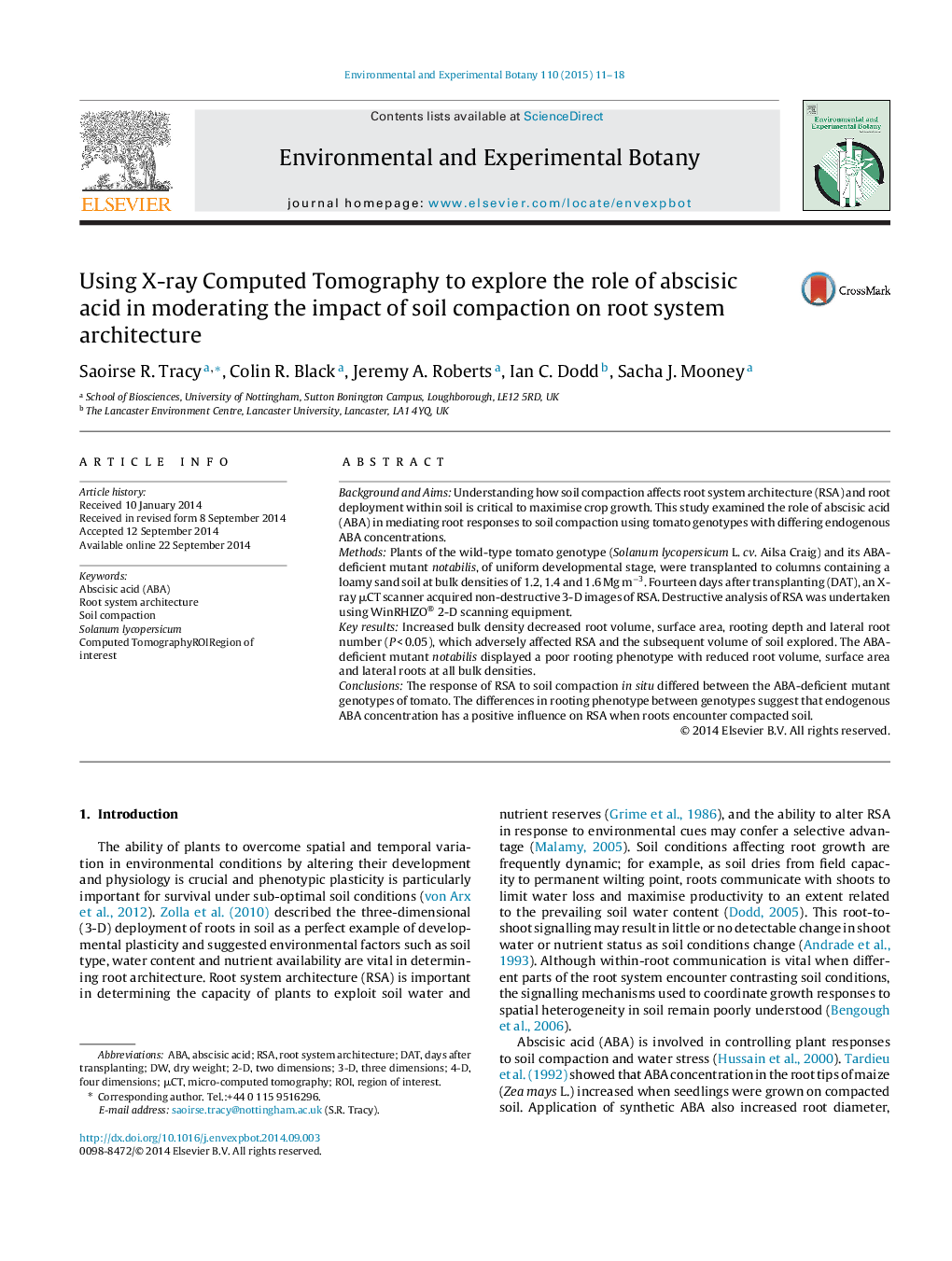| Article ID | Journal | Published Year | Pages | File Type |
|---|---|---|---|---|
| 4554288 | Environmental and Experimental Botany | 2015 | 8 Pages |
•Tomato genotypes with differing endogenous ABA concentrations were used.•Root system architecture was imaged non-destructively using X-ray CT.•Root system architecture differed significantly between genotypes.•Exploration of available soil volume was sub-optimal in the ABA-deficient genotype.•ABA concentration has a positive influence when roots encounter compacted soil.
Background and AimsUnderstanding how soil compaction affects root system architecture (RSA) and root deployment within soil is critical to maximise crop growth. This study examined the role of abscisic acid (ABA) in mediating root responses to soil compaction using tomato genotypes with differing endogenous ABA concentrations.MethodsPlants of the wild-type tomato genotype (Solanum lycopersicum L. cv. Ailsa Craig) and its ABA-deficient mutant notabilis, of uniform developmental stage, were transplanted to columns containing a loamy sand soil at bulk densities of 1.2, 1.4 and 1.6 Mg m−3. Fourteen days after transplanting (DAT), an X-ray μCT scanner acquired non-destructive 3-D images of RSA. Destructive analysis of RSA was undertaken using WinRHIZO® 2-D scanning equipment.Key resultsIncreased bulk density decreased root volume, surface area, rooting depth and lateral root number (P < 0.05), which adversely affected RSA and the subsequent volume of soil explored. The ABA-deficient mutant notabilis displayed a poor rooting phenotype with reduced root volume, surface area and lateral roots at all bulk densities.ConclusionsThe response of RSA to soil compaction in situ differed between the ABA-deficient mutant genotypes of tomato. The differences in rooting phenotype between genotypes suggest that endogenous ABA concentration has a positive influence on RSA when roots encounter compacted soil.
